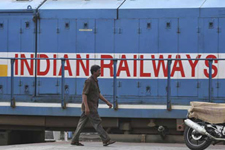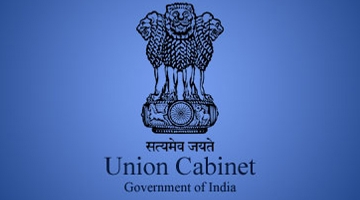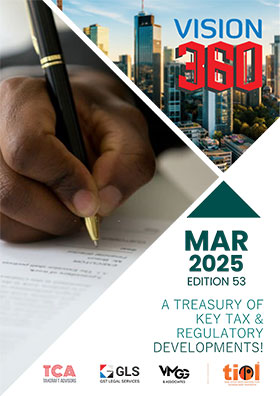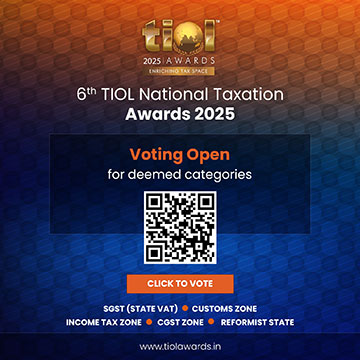Railways achieves Rs 2.56 Lakh Crore Revenue in 2023-24
By TIOL News Service
NEW DELHI, APR 03, 2025: DURING 2023-24, the earning of Indian Railways (IR) was Rs 2,56,093 cr and revenue expenditure was Rs 2,52,834 cr. The net Revenue has improved to Rs 3,260 crore in 2023-24. Major expenditure is done on Staff cost, Pension, energy consumption etc.
To increase the profit, Indian Railways (IR) has adopted two-pronged approach i.e. increase the revenue and bring efficiency in operational expenditure.
Due to implementation of several freight revenue initiatives, the freight carried by IR during 2020-21 was 1,233 million tonnes which increased to 1,591 million tonnes during 2023-24 i.e. a growth of 29%. IR is set to achieve 1.6 billion tonnes freight loading in the FY 2024-25 making it the third largest freight handling railway system in the world. Some of the important measures to improve the freight include-
Encouraging private sector to develop the modern rail freight terminals under 'Gati Shakti Multi- Modal Cargo Terminal (GCT)' policy and augmenting/ upgrading the infrastructure at railway owned goods sheds.
Implementing various schemes for private sector to invest in wagons including the commodity focused specialized wagons such as wagons for cement, oil, steel, fly-ash, automobiles etc.
Facilitating cargo aggregation and thereby, expand the commodity basket by the schemes including the policy of "Cargo Aggregator Transportation Product" and "Joint Parcel Product-Rapid Cargo Services".
Implementing the several tariff related measures to enhance the rail share by making rail mode competitive with respect to road. These include Short Lead Concession for traffic upto 90 Km, Liberalized Automatic Freight Rebate scheme for traffic loaded in empty flow direction, discounts on loading of bagged consignment in open and flat wagon, discount in freight to Fly ash/Bed ash traffic, operation of Mini Rake for Container train, fixation of special haulage rate for Bulk Cement (cement in loose form) when transported in normal containers.
IR has also undertaken many initiatives to increase non-fare revenue such as measures to increase the advertisement earnings, implementing the NINFRIS (New and Innovative Ideas and Concepts Scheme for Generation for Non-fare Revenue) policy to encourage innovative revenue-generating ideas. Some examples of NINFRIS Contracts are Nursing pods, luggage wrapping and sanitization, digital cloakrooms, disposal linen kiosks, imitation jewellery kiosks, Khadi selling kiosks, handicraft kiosks, Kiosks for online education platforms, facilities for electric charging facilities, oxygen parlours, etc. An e-auction policy has been implemented to expedite the bidding for assets such as leased parcel space, parking lots, ATMs etc. The benefits of e-Auction module include - realization of true earning potential of each asset, reduction the time taken in finalization of Tenders and prevent revenue loss on this account, re-award of contract in quick time in case of failure in commencing by any contractor etc.
IR has also undertaken steps to improve the earning from passenger segments such as running of special trains, augmentation of on-board capacity, and introduction of new trains with higher facilities on appropriate fare.
Similarly, various measures are being regularly taken in railways to ensure optimum expenditure. Some of the expenditure management on railways includes manpower management, electrification of Railway tracks etc. Measures like electrification of Railway tracks has led to savings of more than Rs 4700 crore under Diesel traction in FY 2023-24.
Cleanliness is a continuous process and various measures have been taken for maintaining cleanliness at stations and trains which include integrated housekeeping contracts at major stations & trains, mechanized cleaning, bio-toilets in passenger coaches, On Board Housekeeping Service (OBHS) scheme in long distance trains, Clean Train Station (CTS) scheme for identified trains en-routed at nominated stations, dustbins for bio-degradable and non-biodegradable wastes etc.
IR has taken various steps to promote environment friendly & sustainable practices. Some of them are as under: -
Conversion of End on Generation (EOG) trains into Head on Generation (HOG) trains to reduce noise, air pollution and diesel consumption.
Construction of Eastern and Western Dedicated Freight Corridors (DFCs).
Procurement of renewable energy from different power procurement modes for its future energy requirements.
Provision of energy efficient Light Emitting Diode (LED) lighting in all Railway installations including stations, service buildings, residential quarters and coaches for reduction in electricity consumption.
Use of star rated appliances.
98% of railway tracks have been electrified, resulting in saving in diesel consumption.
Harnessing hydrogen gas to drive train sets.
Green Certifications of railway establishments.
Proper waste management.
Improvement/up-gradation of Rolling Stock to enhance safety and comfort of passengers is a continuous and ongoing process on IR. The initiatives include LHB coaches with operating speed of 160 Kmph, better riding index, improved aesthetics and safety features like Lightweight design, Anti-telescopic & Anti climbing features, Centre Buffer Coupler, Axle mounted disc brake system etc. as compared to the conventional ICF coaches of the 1960s.
In its constant endeavor to provide faster service and better travel experience to the passengers, IR are introducing Vande Bharat trains and Namo Rapid Rail service, which have modern coaches, enhanced safety features and better amenities. Presently, 136 Vande Bharat services and 2 Namo Rapid Rail services are in operation on the IR network.
IR have also introduced modern State-of the Art fully Non-AC Amrit Bharat trains. These trains have advanced features like Semi-Permanent couplers for jerk free travel, horizontal sliding windows, better aesthetics of Berths with enhanced look & feel on the lines of Vande Bharat Sleeper, improved crashworthiness in coaches, Emergency Talk Back Unit, improved LED Light fitting & Charging Sockets, foldable snack table and bottle holders, mobile holders etc. These trains comprise 12 Sleeper Class Coaches and 8 General Class coaches. Presently, 4 Amrit Bharat services are in operation.
Besides the improvement in rolling stock, the following measures have been taken by IR to upgrade railway tracks:
i. Using modern track components consisting of 60kg, 90 Ultimate Tensile Strength (UTS) rails, Pre-stressed Concrete Sleeper (PSC) Normal/Wide base sleepers with modern elastic fastenings.
ii. Laying of fan-shaped turnout on PSC sleepers with Thick Web Switches and Weldable CMS Crossings.
iii. Providing Steel Channel/H-beam Sleepers on girder bridges while carrying out primary track renewals.
iv. Using 130m/260m long rail panels for rail renewals to minimize weld- joints.
v. Field-welding by mobile Flash Butt Welding Plant and advanced USFD Testing technique of Rail/ Welds by Phased array technology.
vi. Mechanization in Track renewal/ replacement using Track Relaying Trains, Points & Crossing Changing machines, Track laying Equipment etc.
vii. Deployment of Integrated Track Monitoring Systems (ITMS) and Oscillation Monitoring System (OMS) for comprehensive health assessment to project optimal maintenance requirements.
viii. Induction of advance modern machines for track maintenance i.e., high output tampers, high output Ballast Cleaning Machines and Rail Grinding machines etc.
ix. Adopting Self-propelled Ultrasonic Rail Testing Car (SPURT) and Rail Cum Road Vehicle (RCRV) based USFD system for testing of rails/welds.
x. Using web enabled Track Management System (TMS) for integration and data analytics of the track inspection records received through various sources to enable precise maintenance inputs.
As a consequence of above measures, speed potential of 110 kmph has now been improved significantly to about 80,000 km at present which was only about 31,000 km in 2014. In addition, upgradation and improvement of about 23,000 km track has been done from 2014-15 to 2024-25 (up to Feb'25) for speed potential of 130 kmph.
IR strives to provide affordable services to all strata of the society. IR gave a subsidy of Rs. 56,993 crores on passenger tickets in 2022-23. This amounts to concession of 46% on an average, to every person, travelling on Railways. In other words, if the cost of providing service is Rs. 100, then the price of ticket is Rs. 54 only. This subsidy is continuing for all passengers. Further, concessions beyond this subsidy amount are continuing for many categories like 4 categories of Persons with disabilities (Divyangjans), 11 categories of patients and 8 categories of students.
This information was given by the Union Minister of Railways, Information & Broadcasting and Electronics & Information Technology Ashwini Vaishnaw in a written reply in Lok Sabha yesterday.















